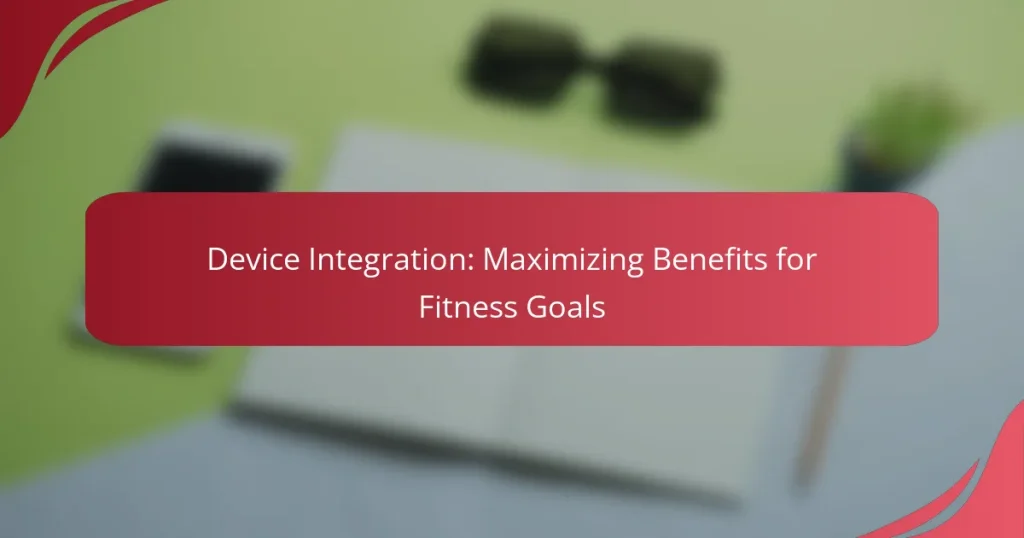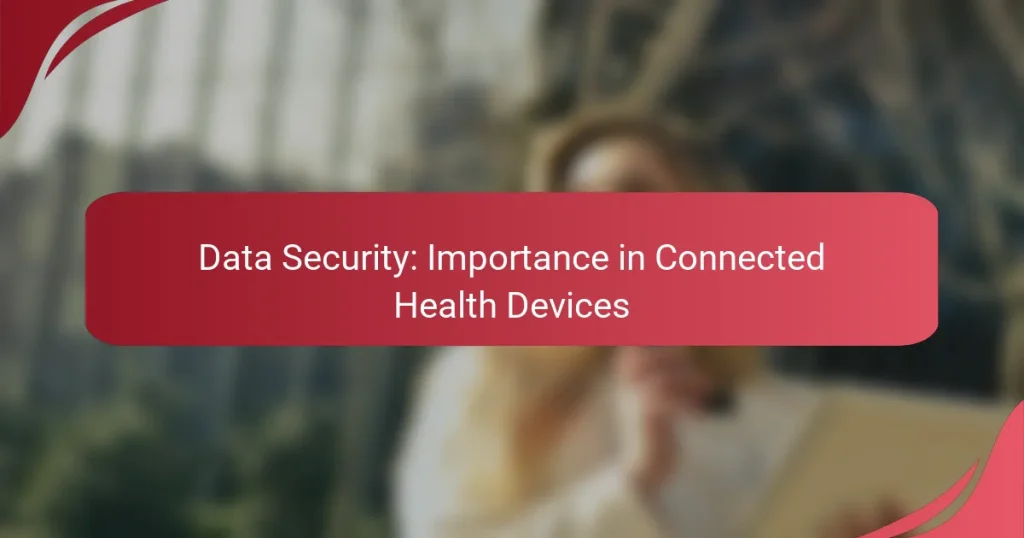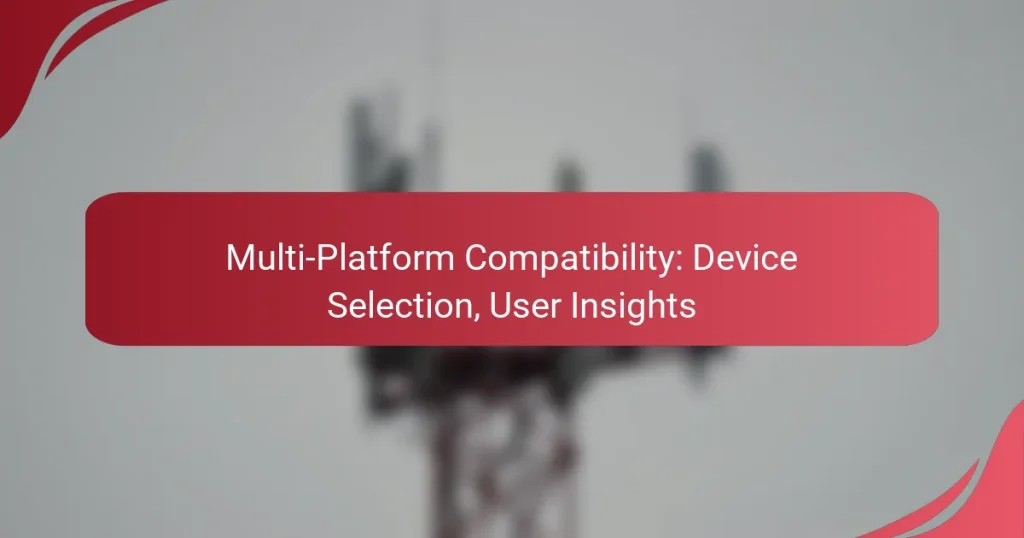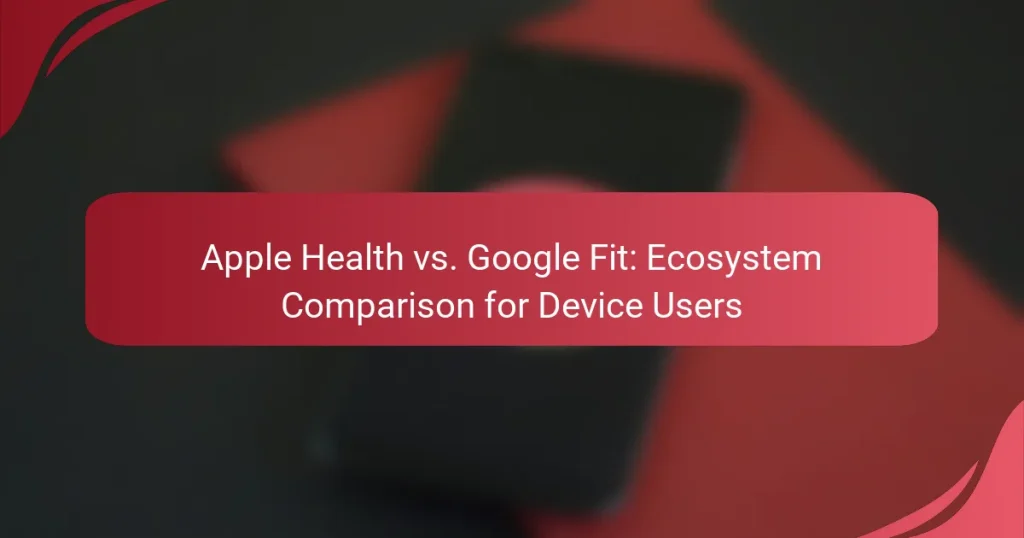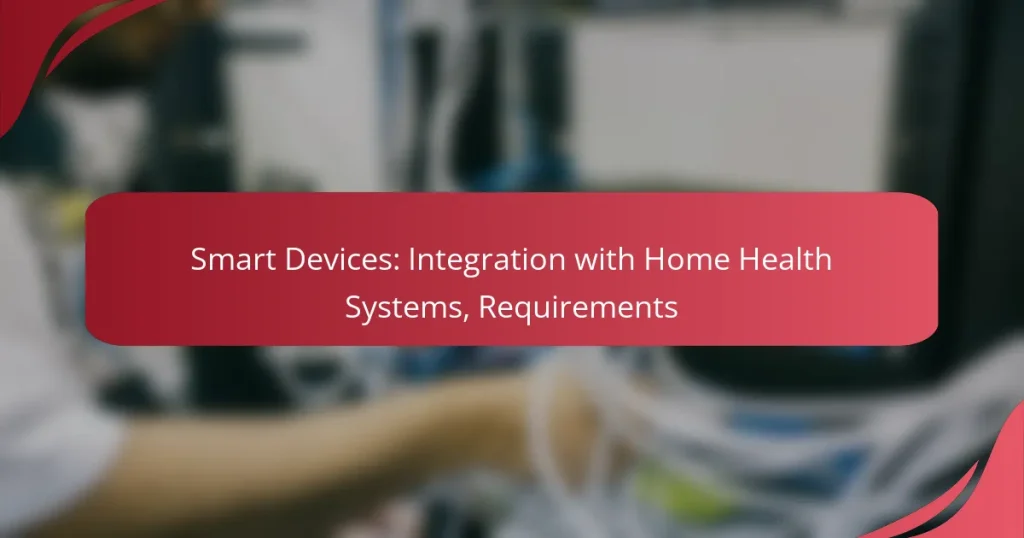In today’s digital landscape, effective connectivity and integration are vital for e-commerce success. By utilizing advanced technologies such as Wi-Fi 6, 5G, and cloud services, businesses can ensure fast and reliable internet access while enhancing operational efficiency. Seamless integration of various platforms allows for improved data flow and collaboration, ultimately leading to better customer experiences and streamlined operations.
Fitness Tracker: Syncing with Health Apps, Step-by-Step Process
Data Security: Importance in Connected Health Devices
Multi-Platform Compatibility: Device Selection, User Insights
Apple Health vs. Google Fit: Ecosystem Comparison for Device Users
Bluetooth vs. Wi-Fi: Benefits for Smart Health Devices
Smart Devices: Integration with Home Health Systems, Requirements
What are the best connectivity solutions for e-commerce?
The best connectivity solutions for e-commerce include technologies that ensure fast, reliable internet access, which is crucial for online transactions and customer satisfaction. Options such as Wi-Fi 6, 5G mobile networks, Ethernet over Powerline, mesh networking systems, and satellite internet provide various benefits depending on the specific needs of a business.
Wi-Fi 6 technology
Wi-Fi 6, also known as 802.11ax, offers improved speed and capacity compared to previous standards, making it ideal for e-commerce environments with high traffic. It supports more devices simultaneously, reducing latency and enhancing user experience.
When implementing Wi-Fi 6, consider the layout of your space to ensure optimal coverage. Investing in compatible routers and access points can significantly boost performance, especially in crowded areas.
5G mobile networks
5G mobile networks provide ultra-fast data speeds and low latency, making them suitable for e-commerce applications that require real-time data processing. This technology enables seamless mobile transactions and enhances customer engagement through instant connectivity.
Businesses should assess their location’s 5G availability and consider the potential need for compatible devices. While 5G can be more expensive than traditional mobile networks, the benefits may justify the investment for high-demand e-commerce operations.
Ethernet over Powerline
Ethernet over Powerline technology allows internet data to be transmitted through existing electrical wiring, providing a reliable connection without the need for extensive cabling. This solution is particularly useful in environments where Wi-Fi signals may be weak or inconsistent.
To implement this solution, ensure that your electrical system is compatible and consider the distance between powerline adapters. While it can be a cost-effective option, performance may vary based on the quality of the electrical wiring.
Mesh networking systems
Mesh networking systems consist of multiple nodes that work together to provide extensive Wi-Fi coverage, eliminating dead zones. This is particularly beneficial for larger e-commerce facilities or multi-story buildings where traditional routers may struggle.
When setting up a mesh network, strategically place nodes to maximize coverage and minimize interference. This system can be more expensive than standard routers, but the improved connectivity can enhance customer experience and operational efficiency.
Satellite internet options
Satellite internet provides connectivity in remote areas where traditional broadband may not be available. This option can be a lifeline for e-commerce businesses in rural locations, enabling them to reach customers online.
However, satellite internet often comes with higher latency and variable speeds, which can affect real-time transactions. Businesses should weigh these factors against their specific needs and consider plans that offer sufficient bandwidth for their operations.
How to integrate different platforms for seamless connectivity?
Integrating different platforms for seamless connectivity involves using various methods to ensure that disparate systems can communicate effectively. This can enhance data flow, improve efficiency, and reduce manual intervention.
API integration methods
API integration methods allow different software applications to communicate through defined protocols. RESTful APIs and SOAP are common types, with REST being more popular due to its simplicity and efficiency. When choosing an API method, consider the data formats supported, such as JSON or XML, and the security measures in place.
For example, a retail application might use an API to connect its inventory system with an e-commerce platform, enabling real-time stock updates. Ensure that your API endpoints are well-documented to facilitate easier integration.
Middleware solutions
Middleware solutions act as intermediaries that facilitate communication between different applications or services. They can handle data transformation, routing, and protocol conversion, making them ideal for complex integrations. Examples include enterprise service buses (ESBs) and message brokers.
When implementing middleware, assess the scalability and performance implications. For instance, using an ESB can streamline processes across multiple systems but may introduce latency if not configured properly. Always monitor the middleware performance to avoid bottlenecks.
Third-party integration tools
Third-party integration tools provide pre-built connectors and workflows to simplify the integration process. Tools like Zapier, Integromat, and MuleSoft enable users to link applications without extensive coding knowledge. They often come with user-friendly interfaces and templates for common use cases.
When selecting a third-party tool, evaluate the range of supported applications and the pricing model, which can vary from subscription-based to pay-per-use. Additionally, consider the security features offered, especially if sensitive data is involved in the integrations.
What are the benefits of cloud connectivity for e-commerce?
Cloud connectivity offers e-commerce businesses enhanced operational efficiency, improved customer experiences, and the ability to scale operations seamlessly. By leveraging cloud services, companies can access resources and data from anywhere, facilitating better integration and collaboration.
Scalability and flexibility
Cloud connectivity allows e-commerce platforms to easily scale their resources up or down based on demand. During peak shopping seasons, businesses can quickly increase their server capacity to handle higher traffic without the need for significant upfront investment in hardware.
This flexibility also means that companies can adapt their offerings and services in real-time, responding to market trends or customer preferences without lengthy deployment processes. For instance, a retailer may introduce new product lines or promotional campaigns with minimal disruption.
Cost efficiency
Utilizing cloud services can significantly reduce operational costs for e-commerce businesses. Instead of investing in expensive infrastructure, companies can pay for only the resources they use, often on a subscription basis. This model helps businesses manage their budgets more effectively, especially for startups or smaller enterprises.
Additionally, cloud providers often include maintenance and updates in their services, further lowering the total cost of ownership. Businesses can save on IT staffing and resources, allowing them to focus on growth and customer engagement.
Improved data access
Cloud connectivity enhances data accessibility for e-commerce businesses, enabling real-time insights and analytics. With centralized data storage, teams can access critical information from anywhere, facilitating better decision-making and faster response times.
Moreover, cloud solutions often integrate with various tools and platforms, allowing for seamless data sharing across departments. This integration can lead to improved customer service, as support teams can quickly access order histories and customer interactions to resolve issues efficiently.
What criteria should be considered for selecting connectivity solutions?
When selecting connectivity solutions, it’s essential to evaluate bandwidth requirements, latency considerations, and cost analysis. These criteria ensure that the chosen solution meets the specific needs of your organization while balancing performance and budget constraints.
Bandwidth requirements
Bandwidth refers to the maximum data transfer rate of a network. Assess your organization’s current and future bandwidth needs by considering the number of users, types of applications, and data usage patterns. For example, video conferencing and large file transfers require higher bandwidth compared to simple web browsing.
A good rule of thumb is to allocate at least 1-2 Mbps per user for standard applications, while high-demand applications may require 10 Mbps or more. Always plan for growth to avoid bottlenecks as your organization expands.
Latency considerations
Latency measures the delay before data begins to transfer over a network. Low latency is crucial for real-time applications like VoIP and online gaming, where delays can disrupt user experience. Aim for latency under 20 milliseconds for optimal performance in these scenarios.
To minimize latency, consider the physical distance between users and data centers, as well as the quality of the network infrastructure. Using fiber-optic connections can significantly reduce latency compared to older technologies like DSL or satellite.
Cost analysis
Cost analysis involves evaluating both upfront and ongoing expenses associated with connectivity solutions. This includes installation fees, monthly service charges, and potential hardware costs. Compare different providers to find the best value for the required performance.
Additionally, consider the total cost of ownership over time. A solution with a higher initial cost may offer better reliability and lower maintenance expenses, ultimately saving money in the long run. Always factor in scalability options to accommodate future growth without incurring excessive costs.
How does IoT enhance connectivity in e-commerce?
The Internet of Things (IoT) significantly boosts connectivity in e-commerce by enabling seamless communication between devices, systems, and users. This interconnectedness facilitates real-time data exchange, improving operational efficiency and enhancing customer experiences.
Real-time inventory management
IoT devices allow for real-time tracking of inventory levels, helping businesses maintain optimal stock levels and reduce excess inventory. Sensors can monitor product quantities and automatically update inventory systems, ensuring accurate data is always available.
For example, retailers can use RFID tags to track items from the warehouse to the sales floor. This visibility helps prevent stockouts and overstock situations, ultimately leading to better customer satisfaction and reduced costs.
Smart logistics solutions
IoT enhances logistics by providing real-time tracking of shipments and delivery vehicles. This technology allows businesses to monitor the location and condition of goods throughout the supply chain, leading to improved efficiency and timely deliveries.
Companies can implement GPS and temperature sensors to ensure products are transported under optimal conditions. This is particularly important for perishable goods, where maintaining the right temperature can prevent spoilage and financial loss.
Customer engagement through connected devices
Connected devices enable personalized customer interactions by collecting data on consumer preferences and behaviors. This information allows e-commerce businesses to tailor marketing efforts and improve user experiences.
For instance, smart home devices can suggest products based on user habits, while mobile apps can send notifications about promotions or restocked items. Engaging customers through these channels can lead to increased loyalty and higher sales conversions.
